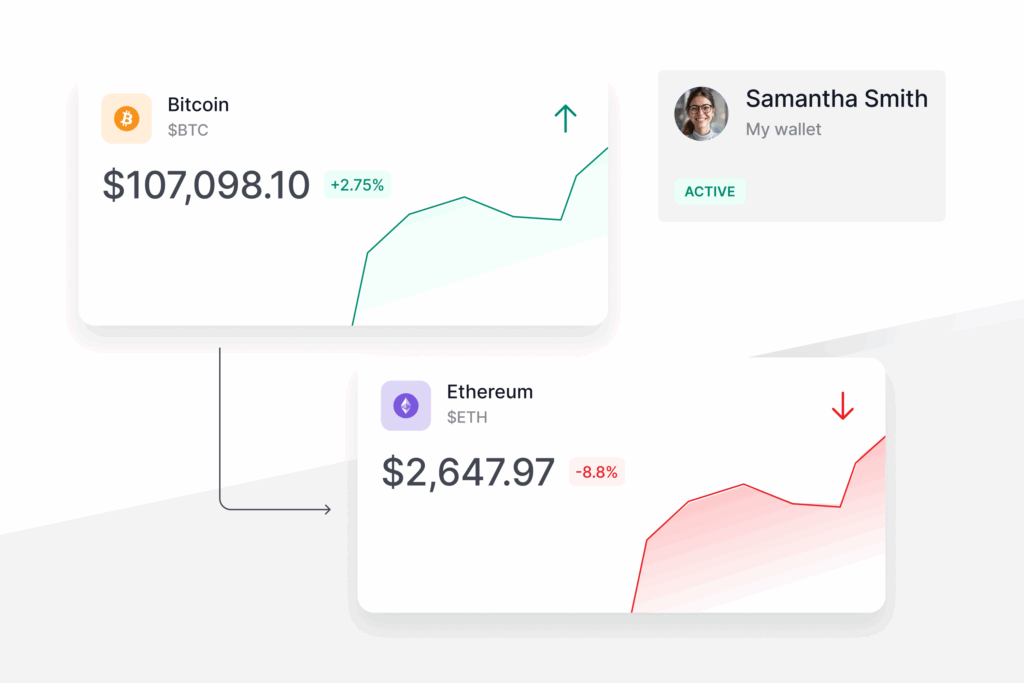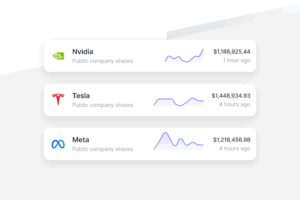
FEATURED ARTICLE
Tax Planning for Realized Gains and Ordinary Income
Tax planning strategies for realized gains and ordinary income

Tax planning strategies for realized gains and ordinary income


If you’ve founded, worked for, or invested in a successful startup and you’re looking to sell your shares, chances are you’ve heard about the Qualified Small Business Stock (QSBS) exclusion. This tax break can allow you to exclude at least a portion of your capital gains on the sale of eligible stock from federal and most states’ taxes after holding the stock for at least five years. (That’s why we’ve called it the “best tax break around.”) Another tool in the tax-planning toolbox is a Charitable Remainder Unitrust (CRUT). Put these two together, and you get one version of what’s known as “QSBS stacking,” a strategy that can help you keep more of your wealth and support worthy causes you believe in at the same time.
Let’s break it down in simple terms, then walk through a real-life example. If you want to jump to running calculations, you can use the calculator here.
QSBS stands for Qualified Small Business Stock. The sale of QSBS stock is exempt from federal tax (as well as state taxes in 45 states plus the District of Columbia) for up to the greater of (a) $10 million of capital gain or (b) an amount of capital gain equal to 10x the shareholder’s basis in the stock. As of July 4, 2025 – when the One Big Beautiful Bill Act (OBBBA) was signed – any QSBS issued after that date enjoys a higher exclusion cap. QSBS issued on or before July 4, 2025 is still capped at $10 million (or 10× your investment basis). Beginning after July 4, 2025, the cap increases to $15 million (or 10× basis, whichever is greater). This benefit is available federally and in most states. When is stock eligible for QSBS treatment? There are a number of requirements, but the short answer is this: If you start, join, or invest in a young company (by putting in cash or working there in exchange for shares) that meets certain requirements (the company must be a C corp and must be the right type of business), and then hold your shares for at least five years, the company will qualify. Most tech startups qualify. This is huge: You could sell your startup shares and not pay capital gains taxes on the proceeds.
A Charitable Remainder Unitrust (CRUT) is a special type of tax-advantaged trust. Here’s the gist:
In the non-QSBS context, the key benefit of a CRUT is that it allows you to defer taxes on the sale of appreciated assets, reinvest the money pre-tax, and compound it for a long time, ultimately creating more wealth for you all while supporting a charitable cause.
The QSBS exclusion is great, and CRUTs are a valuable strategy for deferring capital gains tax on any appreciated asset. So what happens if you combine these two strategies? Enter QSBS stacking. As the name implies, QSBS stacking is a set of strategies for “stacking” multiple $10 or $15 million QSBS exclusions on top of each other. This move capitalizes on an important feature of QSBS: every taxpayer gets his, her, or its own exclusion. Since a CRUT is consider a separate taxpayer, the CRUT will get its own exclusion.
QSBS stacking, then, is about multiplying the number of QSBS exclusions you can utilize when selling your shares. This can take several forms: You can stack QSBS exclusions by gifting shares directly to family members, by gifting shares to non-grantor trusts, or by gifting shares to CRUTs. But our focus here is on the CRUT option, which is the best fit for most people who are looking to maximize the proceeds they receive (versus passing on assets to loved ones). Since QSBS-eligible shares are not taxed upon sale, the distribution of the sales proceeds of QSBS-eligible shares does not carry out any tax liability to the beneficiary.
Understanding the tax code’s “four-tier accounting” system is crucial for maximizing the tax benefits of QSBS stacking with CRUTs. When your CRUT makes its annual distributions, the IRS requires these payments to follow a specific order based on the type of income being distributed. This ordering system determines how much tax you’ll pay on your distributions— and, more importantly, how much of your QSBS gains can remain tax free.
Here’s how the tiers work, from first (highest taxed) to last (tax free):
Why this Matters for QSBS Stacking: When you put QSBS in a CRUT, two powerful things happen. First, the initial sale inside the CRUT is tax free because CRUTs are tax-exempt entities. Second, when that money eventually comes back to you as principal (Tier 4), it remains tax-free. The four-tier system ensures you’ll eventually access these tax-free gains, though you may need to work through the higher-taxed tiers first.
Strategic Tip: To maximize the tax-free nature of your QSBS gains, consider investing the CRUT’s assets in tax-efficient vehicles that minimize Tier 1 and Tier 2 income. This allows more of your distributions to come from the tax-free principal tier sooner.
We are going to compare the benefits of using a CRUT for QSBS stacking versus not using one and see how much money you would end up with after five years. We’ll assume that all proceeds are invested in the market.
Scenario:
CRUT Step-by-Step Calculations
Here’s what the numbers would look like in Year 1:
Year 1
| Item | Amount |
|---|---|
| Start Value | $10,000,000 |
| Qualified Dividends (2%) | $200,000 |
| Capital Gains (8%) | $800,000 |
| Pre-Distribution Total | $11,000,000 |
| Distribution (37% of $11M) | $4,070,000 |
| Remaining | $6,930,000 |
Distribution Breakdown (Year 1):
Year 2
| Item | Amount |
|---|---|
| Start Value | $6,930,000 |
| Qualified Dividends (2%) | $138,600 |
| Capital Gains (8%) | $554,400 |
| Pre-Distribution Total | $7,623,000 |
| Distribution (37% of $7.623M) | $2,819,000 |
| Remaining | $4,804,000 |
Distribution Breakdown (Year 2):
Year 3
| Item | Amount |
|---|---|
| Start Value | $4,804,000 |
| Qualified Dividends (2%) | $96,080 |
| Capital Gains (8%) | $384,320 |
| Pre-Distribution Total | $5,284,400 |
| Distribution (37% of $5.2844M) | $1,955,200 |
| Remaining | $3,329,200 |
Distribution Breakdown (Year 3):
Year 4
| Item | Amount |
|---|---|
| Start Value | $3,329,200 |
| Qualified Dividends (2%) | $66,584 |
| Capital Gains (8%) | $266,336 |
| Pre-Distribution Total | $3,662,120 |
| Distribution (37% of $3.6621M) | $1,355,000 (approx) |
| Remaining | $2,307,120 |
Distribution Breakdown (Year 4):
Year 5
| Item | Amount |
|---|---|
| Start Value | $2,307,120 |
| Qualified Dividends (2%) | $46,142 |
| Capital Gains (8%) | $184,570 |
| Pre-Distribution Total | $2,537,832 |
| Distribution (37% of $2.5378M) | $938,000 |
| Remaining (to Charity) | $1,599,832 |
Distribution Breakdown (Year 5):
| Year | Total Distribution | Qualified Dividends Portion | Capital Gains Portion | Principal Portion |
|---|---|---|---|---|
| 1 | $4,070,000 | $200,000 | $800,000 | $3,070,000 |
| 2 | $2,819,000 | $138,600 | $554,400 | $2,126,000 |
| 3 | $1,955,200 | $96,080 | $384,320 | $1,474,800 |
| 4 | $1,355,000 | $66,584 | $266,336 | $1,022,000 |
| 5 | $938,000 | $46,142 | $184,570 | $707,288 |
| Totals | $11,137,120 | $547,406 | $2,189,626 | $8,400,088 |
(Principal total is approximate; we summed each year’s principal portion.)
Total Tax ≈ $1,012,698
Post-Tax Distributions ≈ $11,137,200 – $723,000 ≈ $10,124,422 (importantly, this doesn’t account for investing the distributions each year through the end of five years)
If you do reinvest the distributions and pay the taxes, you will end up with $12,036,999 after taxes. On top of that, you would be able to donate $1,600,000 to the charities of your choice after five years.
If you don’t use a CRUT and aren’t able to use an additional QSBS exclusion, you will pay 37% in federal and state taxes upfront on the $10,000,000 sale of your shares, leaving you with $6.7 million to start investing. After 5 years, you’d have $8,687,558, which is about 72% of what you would have had with a CRUT.
| Year | Starting Value | Dividends | Capital Gains | Taxes | End of Year (Pre-Tax) |
| 1 | $6,300,000 | $126,000 | $504,000 | $46,620 | $6,883,380 |
| 2 | $6,883,380 | $137,668 | $550,670 | $50,937 | $7,520,781 |
| 3 | $7,520,781 | $150,416 | $601,662 | $55,654 | $8,217,205 |
| 4 | $8,217,205 | $164,344 | $657,376 | $60,807 | $8,978,119 |
| 5 | $8,978,119 | $179,562 | $718,249 | $66,438 | $9,809,492 |
| End of Year 5 | $1,121,825 | $8,687,668 |
QSBS stacking with a CRUT represents a powerful tax-planning strategy for founders, early employees, and early investors in successful startups. By combining the tax advantages of QSBS with the charitable and tax deferral benefits of a CRUT, you can potentially:
We’ve built a platform that makes advanced tax planning – once reserved for ultra-high-net-worth individuals – accessible to everyone. With Valur, you can reduce your taxes by six figures or more, at less than half the cost of traditional providers.
From selecting the right strategy to handling setup, administration, and ongoing optimization, we take care of the hard work so you don’t have to. The results speak for themselves: our customers have generated over $3 billion in additional wealth through our platform.
Want to see what Valur can do for you or your clients? Explore our Learning Center, use our online calculators to estimate your potential savings or schedule a time to chat with us today!